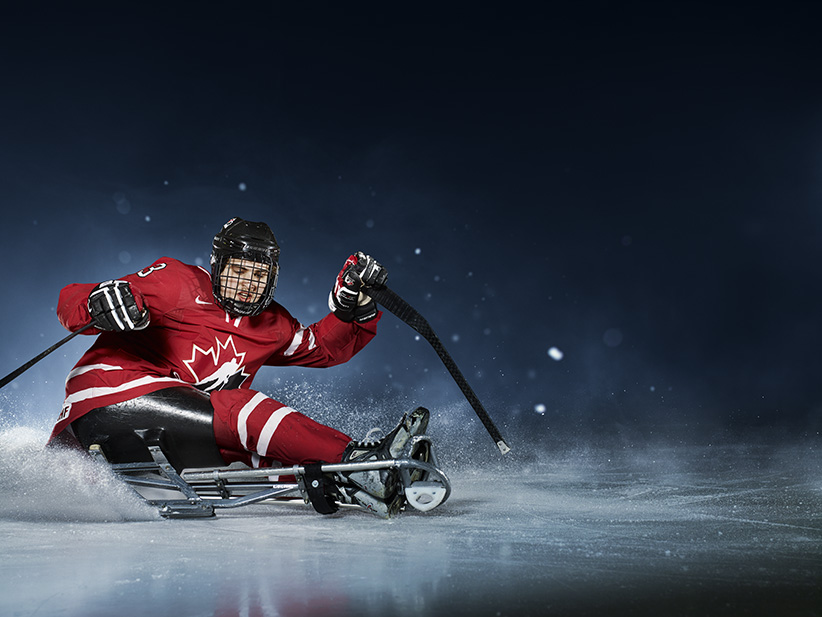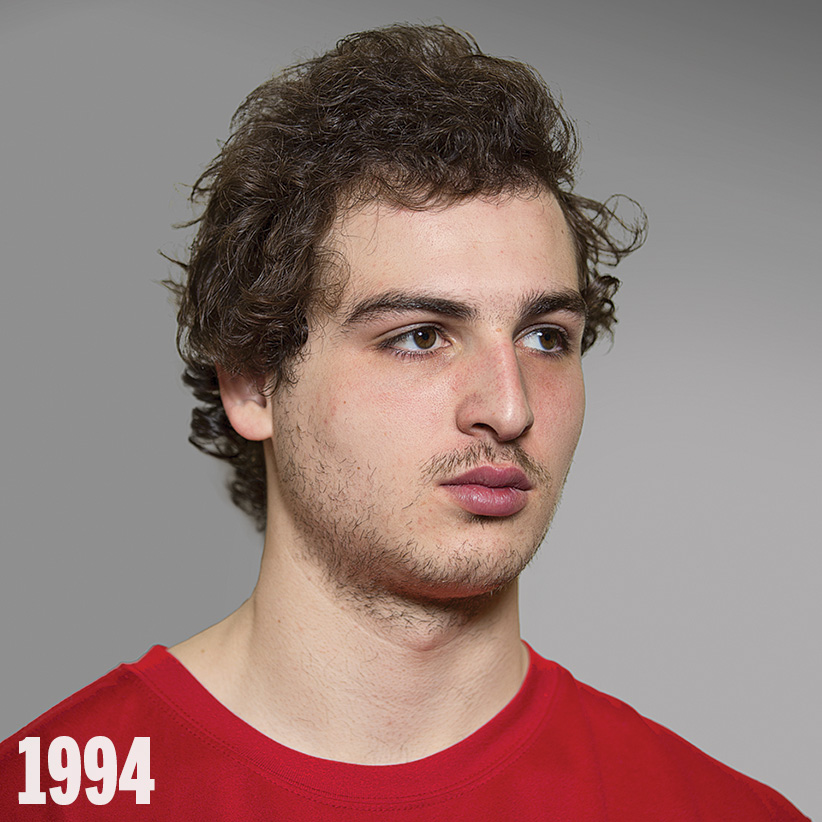‘I couldn’t feel my legs’
Dominic Cozzolino had a 50-50 chance of walking again
Dom Cozzolino, 1994. (Photograph by Finn O’Hara)
Share
With two minutes to go in a crucial AA hockey playoff game, Dominic Cozzolino took a shot on goal, was checked from behind and slid into the boards, making contact butt-first. To those watching, it looked like a typical hit. But the 14-year-old didn’t get up. “I felt the vibration go up my spine,” says Dominic, “and then I couldn’t feel my legs.” His father, Frank, made his way to the ice; his mother, Jennifer, stayed in the stands with their younger daughter, Melissa. For Dominic it felt like an eternity, lying there waiting for the ambulance. And then things sped up. Within 24 hours, he was transferred to three different hospitals and seen by multiple doctors—all of whom stressed the seriousness of the injury. Dominic remembers asking his dad if he’d be able to play in the next playoff game later in the week. Overhearing this, a doctor replied, “He’ll be lucky to ever play again.”
The injury happened on March 3, 2009, but Frank still tears up when talking about it. Dominic, now 21, is completely matter-of-fact. “I had a compression fracture to my L1 vertebra,” he says, “which is just above your tailbone. They call it a burst fracture, because the vertebra explodes. And the bone fragments went into the spinal canal, which causes nerve damage.” He underwent an eight-hour spinal decompression surgery—and was told he had a 50-50 chance of ever walking again. It would depend on how his body reacted to the surgery and rehab.
FROM THE ARCHIVES: A 1994 Maclean’s profile of Svend Robinson, then Canada’s only openly gay MP
[widgets_on_pages id=”110-back”]
Dominic came home 3½ months after the accident with a wheelchair and a walker. But he was determined to get around on his own: he’d take a step, lean on a wall, use the dining room table as support as he made his way to the kitchen. “For a year, I had pain everyday just from standing,” he recalls. “I couldn’t walk very far before having to sit down. Even sitting for long periods was tough.” When he returned to school in September, he was walking well enough unassisted—but he was not the same person. “I used to be an athlete, play football at lunch, run all the time,” says Dominic. “I was worried about having a relationship with those same friends that still did that stuff. I didn’t want to be the guy who was watching all the time.” He took up weightlifting and spent most of his free time at a local gym.
Eventually, he started thinking about hockey again. With a pair of custom-built skates he was back on the ice four years after the accident. “It was great just to fool around,” says Dominic, “to know that I would be able to teach my kids to skate one day.” But his ankles would always be too weak to play hockey.

Knowing Dominic’s competitive spirit, more than one person suggested he try sledge hockey—a version of the game played on double-bladed metal sleds, where the players hold two small sticks, one to propel and one to shoot. He was unconvinced: “I was so used to the NHL, having one stick and being on skates.” But seeing the game live changed his mind. “You could fake guys out, deke them out,” he says. “They were putting shots in the top corner. It was still hockey.” Mastering the sled was frustrating—and Dominic had to develop muscles he’d never used before. He joined a team and grilled the other players about how to get better. And he set some lofty goals right off the bat: make Mississauga’s elite team, then the Ontario team and then Team Canada.
He did it all in three years—and is now a forward on Canada’s Olympic-bound sledge hockey squad. Frank and Jennifer are proud, of course, but for them the sport is terrifying. The family considers it more violent than stand-up hockey—they’ve seen up to 70 hard hits in a game, especially when rivals Team Canada and Team USA meet up. “I was not on board with it,” says Jennifer. “But the first day he went around that ice, the smile on his face said it all. We knew we had to give in.” Dominic says his back is protected by the sled’s bucket seat—and he’s not worried about another injury. That said, he no longer thinks he’s invincible: “This teaches you anything can happen, not to take anything for granted. And it taught me how to work hard, it really brought that out in me.” — Shanda Deziel
(Portrait by Finn O’Hara)
[widgets_on_pages id=”1990s”]
[widgets_on_pages id=”110-post”]
